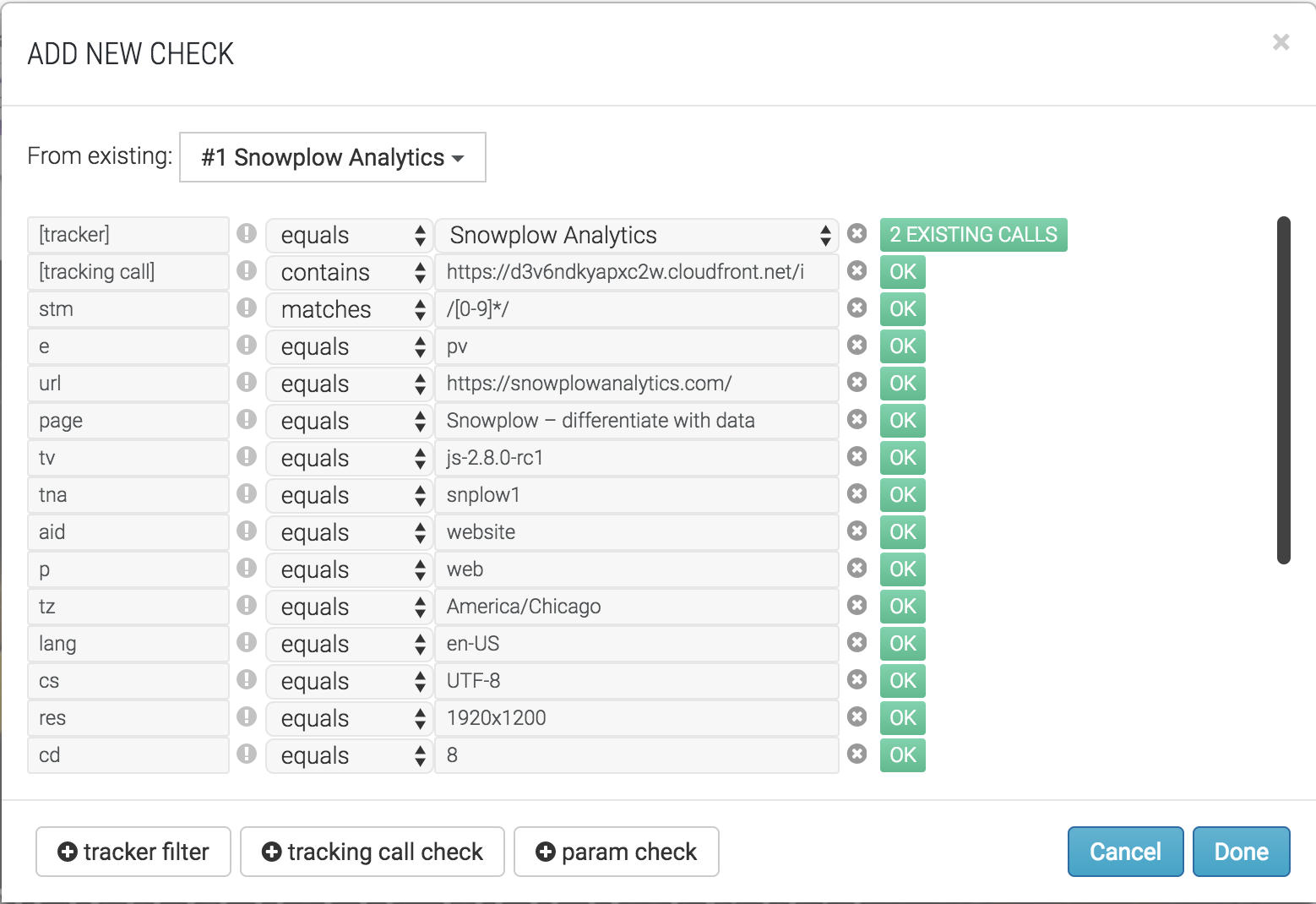Automated Tagging Checks for Snowplow Analytics
 While Adobe and Google Analytics continue to dominate the field of digital analytics, a crop of solutions is trying to break away from the common paradigm of SaaS offerings. Key differentiators of tools such as Snowplow Analytics include complete data ownership, open collection standards, and added flexibility in the type of pre-processing and analysis applied to the data.
While Adobe and Google Analytics continue to dominate the field of digital analytics, a crop of solutions is trying to break away from the common paradigm of SaaS offerings. Key differentiators of tools such as Snowplow Analytics include complete data ownership, open collection standards, and added flexibility in the type of pre-processing and analysis applied to the data.
It's not unusual for companies deeply invested in Google or Adobe solutions to build their own custom (almost parallel) systems for collecting data exactly in the format preferred by their organization. They may deploy fully customized collection libraries, send raw data to dedicated collection servers, and then make that data available to multiple data processing platforms, including advanced BI platforms.
Like any clickstream solution, these tools are not immune to data quality issues. One added challenge is they send data to custom collection server names, often using proprietary pixel names, and thus evade detection by most automated tagging auditing platforms.
While QA2L maintains a robust library for various MarTech vendors relying on tags, we recognize the need for organizations to be able to add their own custom definitions for specific HTTP requests they wish to audit.
Using a tracking implementation on https://snowplowanalytics.com/ as an example, we'll show you how to define a custom tracking definition based on a unique domain name, create custom rules for each of the parameters that are part of the tracking request, and automate their ongoing validation.
1. Define a Custom Tracker:
Login to your QA2L account (request a free trial account) and select My Account. In the preferences tab you will be able to define your custom tracker as shown below:
You can apply more advanced rules for the definition of your tracker by using the "URL ignore if" and "Filter params" options.
2. Create custom rules for any parameter detected under the Snowplow tracker:
Using QA2L Design interface request https://snowplowanalytics.com/. QA2L will detect any tracking requests that match your tracking definition and you can enable rules for each of the query string parameters that are part of the request:

3. Add more steps to your task and schedule how often you'd like it to run:
Continue adding steps to your task using QA2L's innovative flow approach (see video tutorial). When you are happy with the interaction steps you have defined, go to the Manage console and specify the cadence for the automated runs of this task:

To see additional capabilities including sending the task audit results to a Slack channel, alerting on JS errors, or injecting custom code, contact us for a demo.
Tags: Product News